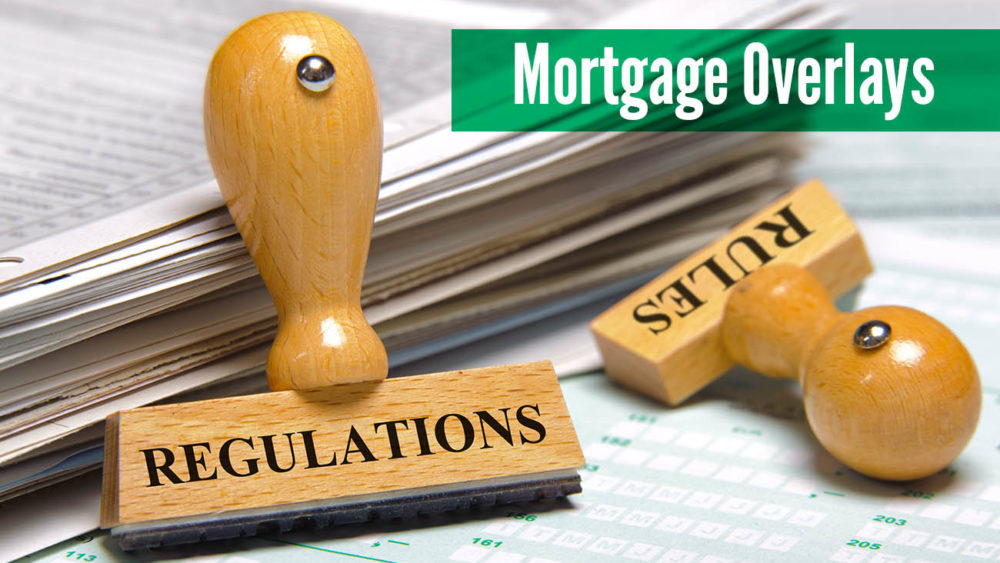Mortgage overlays are company specific rules that a lender must follow. These are on top of the published guidelines for lending money in the form of a mortgage. Each lender has their own overlays that are applied to mortgage loans together with the rules put in place by:
- Fannie Mae
- Freddie Mac
- FHA
- VA
- USDA
The mortgage overlays are usually determined by the lender’s ability to take on risk and the current state of the economy and housing market. Mortgage overlays can be most restrictive when the economy is in a recession and more lenient when the economy is flourishing.
Mortgage Overlays: Larger Lenders
The larger lender can most likely lend to people or businesses with lower credit scores than the smaller lender since the larger lender can take on more risk than the smaller lender. The larger lender can afford it if a few borrowers default on their mortgages but the smaller lender might not be able to take a hit like that.
Mortgage Overlays: Smaller Lenders
The smaller lender would probably have a higher standard for credit scores because they’re not able to take on much risk. They will typically have higher minimums for things such as:
- Debt to income ratio
- Credit score
- Down payment requirements
- Amount of time after bankruptcy. The smaller lender uses these overlays so they will not face as much risk as the larger lender.
The smaller lender uses these overlays so they will not face as much risk as the larger lender.
The overlays vary from lender to lender and you’ll want to do some research on each lender before applying for a mortgage loan to make sure you qualify and to see if the overlays are not a deal-breaker for you.



Comments are closed.